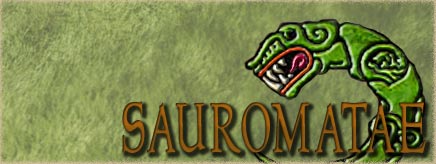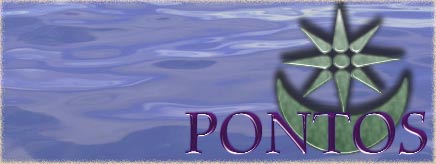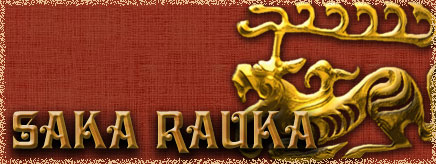Overview\n\nOxeiana is the south-eastern part of the historical Sogdiana, surrounded by mountains to the north, east and west, and by the mighty Oxus to the south. Oxeiana is a more mountainous land than nearby Baktria and Sogdiana, with fierce mountainous tribes in the periphery and savage nomadic tribes to the north.\n\nGeography\n\nOxeiana geographically speaking isn't anything more than the land on the northern bank of the Oxus River, with its southern bank forming the northern Baktrian border. Oxeiana’s northern border is formed by the Hissar Mountains, bounded to the west by another range of mountains, the Sogdian’s. To the east lies the fabled Hindu Kush, while the southern border is closed by the mighty of Oxus, of Alexander’s fame. Like its neighbour Baktria, Oxeiana is a land of contradictions: high mountains dominate the north, while abundant river valleys flow down from these high peaks. There was once a semi-arid zone between the Hissar Mountains and the Oxus River. Some mountain streams reached the river Oxus after leaving the Hissar Mountains, and had formed lush corridors through the steppe. When the farmers started to dig canals to irrigate fields, the waters disappeared from the arid zone and it changed into a desert. The area is riven by one major river to the south of the capital, Oskobora, the Oxus, coming from the north-east and passing through the entire province. Like Baktria, Oxeiana is a land of towns; most of these were located on the Oxus, like Oxeiana at the confluence of Oxus and Occhus. Many mountain tribes inhabit the circumference of the province, like the Maroukaioi to the north-east.\n\nHistory\n\nHistory of Oxeiana is tied to that of Baktria’s, due to their proximity. Little is known about the first civilizations of this area, except that the indigenous inhabitants of Oxeiana were prosperous before those of Baktria, due to the fertility of the area. However, later irrigation projects in the Bronze Age in Baktria resulted in it eclipsing the fertility of the lower river valley in Oxeiana. At this point Oxeiana became no more than a part of Baktria, and its history becomes amalgamated with that of Baktria’s. Assyrian kings Ninus and Seramis are supposed to have conquered it along with Baktria against the Bactrian king Oxyartes but this is likely myth. However it seems, reading through the lines of holy text of the Avesta, that an independent state had risen around Baktria-Zariaspa, including Oxeiana, where Zoroaster would have taken safety. \n\nWhat is sure, is that during Cyrus the Great’s campaign against Massagetai, he incorporated Baktria, Sogdiana and Oxeiana into the Achaemenid Empire. However, Baktria-Oxeiana was a rebellious area which created some difficulties for the Achaemenid state: for example in 462 BC Artaxerxes I annihilated a Baktrian revolt instigated by his own brother. When Alexander the Great began to conquer the Achaemenid state, the Baktrian satrap Bessos murdered King Darios, in July 330 BC, who had fled to Hecatombopylos after his defeat at Gaugamela. Bessos then attempted to make a new kingdom with Baktria as its heart, also taking control of Oxeiana, taking the name of Artaxerxes. Alexander came to Baktria in shortly after, vanquishing Bessos in 329 BC and taking a year to pacify the region, putting in place Artabzos as a satrap. Oxeiana created a number of difficulties for the Makedonian king, who spent the spring of 328 BC subduing tribes and towns under the control of the rebellious satrap Spitamenes, and fighting the Eastern Sakas. Alexander the Great is said to have founded several towns both in Baktria, Sogdiana and Oxeiana, but it's difficult to tell where these were located or even if they were a foundation or a re-foundation.\n\nUpon the death of Alexander, Sogdiana bore the brunt of the conflicts between the Diadochoi. After the early years of the conflict of the Diadochoi, Oxeiana was subdued by the Seleucid dynasty.\n\nBy 272 BC Oxeiana was under the power of Seleucid dynasty. Far from the administrative heartland of the empire, imperial power was weak, creating a region riven with disorder and banditry. Weakening of imperial authority resulted in Diodotos' revolt of 250 BC, leading to a new Greco-Baktrian kingdom. Baktria became a dominant power in the region, extending its influence all the way to India, resulting in a unique local fusion of Indian, Greek and Persian culture. Oxeiana remained part of the Baktrian Empire until 140 BC, when the Yuezhei took several towns in the area and sacked Eucratidia, the former Oskobora. The influence of nomadic tribes increased over time, resulting in the region becoming known as Tocharistan and marking the end of the Baktrian Empire. \n\nStrategy\n\n A wise leader would aim to control both Oxieiana and Baktria, as both straddle valuable trade routes and possess rich and fertile soils. Control of one province will likely result in dominance of the other, providing a rich heartland for further conquest…




 Reply With Quote
Reply With Quote









 -Silentium... mandata captate; non vos turbatis; ordinem servate; bando sequute; memo demittat bandum et inimicos seque;
-Silentium... mandata captate; non vos turbatis; ordinem servate; bando sequute; memo demittat bandum et inimicos seque;



Bookmarks